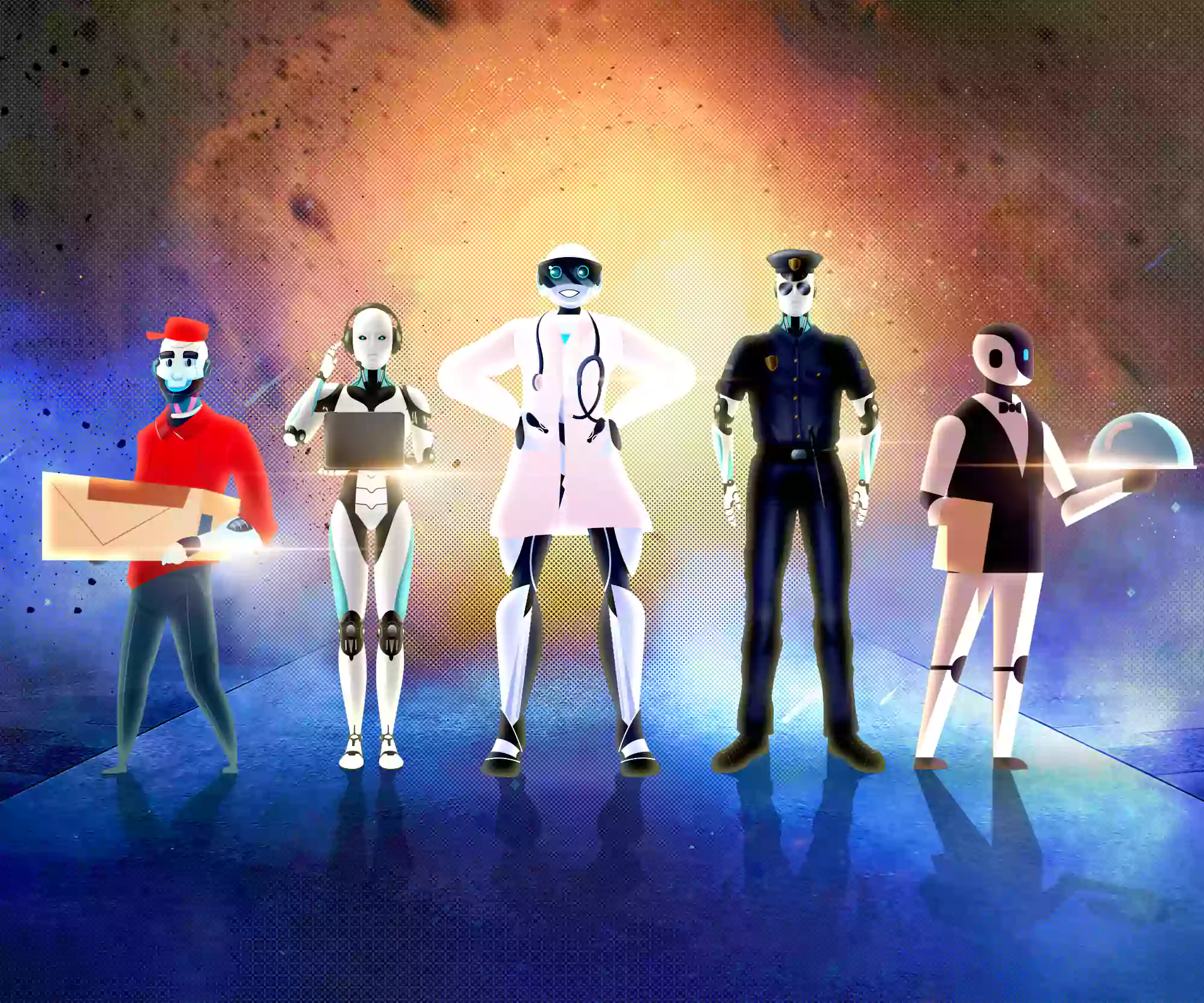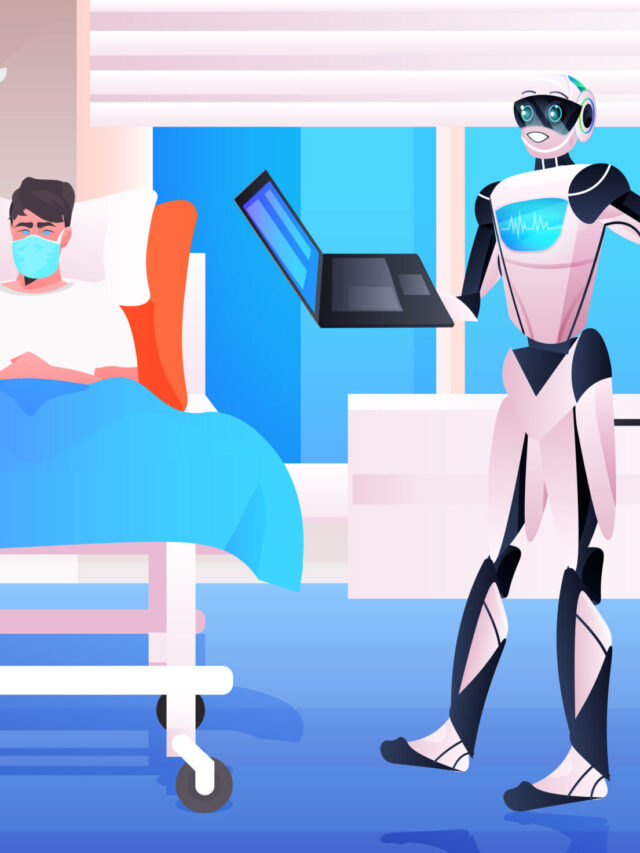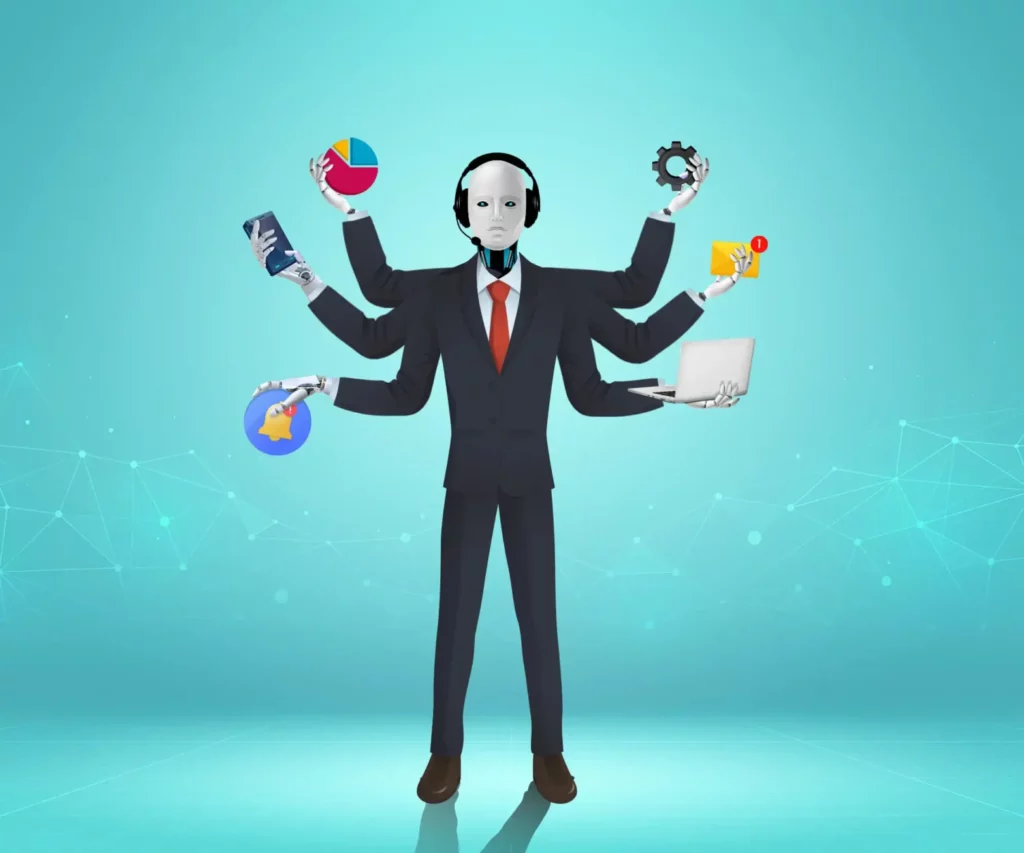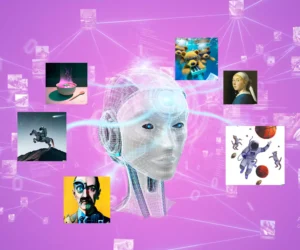
Humanoid robots have long been capturing the imagination of global audiences. These technological innovations have made incredible headway in the real world since Will Smith stood up for one of them in I, Robot, in 2004. Because of the sheer scope of what they can achieve, different companies in various countries are developing humanoid robots. Let me introduce you to some of them.
Sophia
The first ever AI humanoid robot, Sophia, created a stir of wonder and ambition worldwide. Hanson Robotics created Sophia, an excellent combination of science, engineering, and artistry. She can converse with human beings quite seamlessly. From singing with Jimmy Fallon to being granted citizenship in Saudi Arabia, Sophia’s fame has spread around the globe. Interestingly, Sophia frequently generates her replies on the spot rather than following a pre-determined script.
Grace
Grace is another prototype of a humanoid robot developed by the same company that created Sophia. Popularly called Sophia’s sister, Hanson Robotics created Grace with a specific purpose. Resembling a healthcare professional, she was designed in a blue nurse’s uniform with Asian features to interact with the elderly and isolated people during the COVID-19 pandemic. She can talk to people and calm them down while taking temperature, measuring their responsiveness, and sharing the data with medical professionals via an inbuilt camera in her chest. If Grace interacts with a person over time, the data collected will be of greater use. This type of data collection could positively impact fields such as elderly care.
Ameca
Ameca is a communications robot developed by Engineered Arts. This innovation has a cloud-connected platform, which combines the power of Artificial Intelligence (AI) with Artificial Body (AB). Like the other two, she can engage in conversations with people, but what sets Ameca apart is her ability to use facial expressions. Her modular architecture enables any of her body parts to work independently. As a result, she has the most human-like movements, like scratching her nose, raising a hand to the side of her head, and much more! You have to see it to believe it. Ameca is an excellent example of a robot with the potential for use as an information source in airports or tourism centres.
Atlas
Boston Dynamics is one of the major players in the robotics industry, and Atlas is one of their best. This incredibly powerful robot has human-level agility—it can run, jump, backflip, move over challenging terrain, and help transport, fix, and build things. To my simplistic mind, the closest thing I can liken it to is a Transformer.
Pepper
Pepper is a small robot, standing 120 cm tall, with a touchscreen intended to appear harmless and friendly. Created by Aldebaran, Pepper can interact with people. This robot can also analyse facial expressions and changes in tone of voice to recognise emotions and respond accordingly. In addition, the touch screen on its chest enables the robot to display content to feature messages and support speech.
Handle
Another impressive invention of Boston Dynamics is Handle. What makes Handle different to most others on this list is that it has wheels instead of feet. Thus, Handle has faster mobility on rough terrains. This humanoid robot can deliver packages, sort through, pick up and stack boxes neatly, and be helpful in a warehouse. The swinging “tail” helps the robot to maintain balance and move without much difficulty in congested spaces.
How can humans use humanoid robots?
The above-listed humanoid robots are not just machines but extremely complex conceptions with intrinsic abilities and purposes. With the help of AI, they can do incredible things that are characteristic of humans. For example, they can recognise emotions in others and, in turn, emote and speak accordingly. In addition, they can move, sort, and categorise items and even engage in conversation with human beings. Due to these potentials, we can thus use them in various fields.
Humanoid robots in education
These humanoid robots are more relatable versions of computers with the added advantages of efficiency and efficacy. We can use these robots to benefit children who might struggle to work with computers using a mouse and a keyboard; they can direct the machine to operate via speech. It is like making your personal computer a little more personable. They can be instrumental in second language learning as the learner engages in conversations while receiving instruction in their primary language.
An interesting study looked at how toddlers might socialise with a robot. The results showed that the toddlers lost interest when the robot was very predictable. Still, as long as the conversations were diverse and engaging, the toddlers treated the robot like a peer.
Humanoid robots in healthcare
In a general sense, there is no denying that technology has given the healthcare sector a major boost, diversifying its possibilities manifold. Robots, in particular, have been significantly advantageous to this sector. In 2017, Toyota introduced the world to Robotic Avatar, a fascinating piece of machinery that mimics the movements of a human operator. This technology could allow professionals to even perform surgeries from an entirely different part of the world.
However, robots are primarily used to monitor vitals and provide basic care for people. They have been incredibly beneficial in the case of the elderly. With the global elderly population on the rise, many do not have access to caretakers. In some cultures, it is common to see older people in nursing homes or even having to fend for themselves. Moreover, many countries have ageing populations within which, in a few years, there will not be enough young people to look after all the elderly. In such a situation, humanoid robots could slot in quite beautifully to provide primary care and conversation to ensure that the people are looked after and not lonely.
Other uses of humanoid robots
It is also possible for humanoid robots to carry out the roles of security guards (equipped with cameras), restaurant servers, and package delivery people. Additionally, robots can be personal assistants—setting reminders, providing alerts at home, cleaning, etc.
The dilemma
There are two questions worth considering as we stand on the cusp of a future of robots, and they are, unfortunately, without any real answers.
Firstly, humans have wondered what makes us special and unique for as long as we have existed. What makes us stand out from the rest of the creatures on this planet? These questions will resurface as robots become increasingly intelligent. For example, Google recently fired one of their engineers. The engineer claimed to have found that the AI he was working with had become sentient and raised a concern about “being switched off”. Is that not a very fundamental human worry too? Does that mean robots deserve the same rights as humans? Does it mean that they don’t?
A second deep desire that human beings have is to be needed. However, as technology advances and robots improve, we can no longer dismiss the concern of not being required to work and engage in society as we currently do. The ideal dream is that we will live in a world where people do not have to work to survive. Instead, they can live and work in a manner of their choosing while robots take care of the necessary jobs. Humans could take up specialist jobs where robots are not enough. Still, it raises other questions: would robots then run everything else, from construction to agriculture? Would that leave people feeling dispensable? Or would people feel free to choose how they want to live and what they want to do with their time? Assuming that the latter is the dream the world will work towards, the road will be fraught with challenges.
Whether you favour robots or are sceptical about them, much of what we think about robotics exists only in the future. For the time being, however, humanoid robots are not ready to deal with the real world. Most of them cannot deal with the unpredictability that the world offers. Nevertheless, it seems to be a matter only of “when” and not “if”; the further we go, the more questions arise.



